What is a Periaktoi?
Periaktoi, also known as “triple-faced” or “three-sided” scenery, is a rotating scenic device used in theatrical productions for over 2,000 years. First invented in ancient Greece, periaktoi quickly changed the backdrop of a stage to set the scene for different play acts.
A periaktos typically consists of a tall, triangular wooden structure that can be rotated on an axis to reveal one of three painted scenes. The scenes are painted on cloth or canvas and can be quickly changed by rotating the periaktos. Periaktoi allowed playwrights and directors to set different scenes quickly and easily without pausing the performance or changing the entire stage.
The most famous use of periaktoi in ancient Greek theater was in productions of plays by renowned playwrights such as Aeschylus, Sophocles, and Euripides. The periaktoi allowed for a seamless transition between scenes, helping to maintain the flow of the performance and keep the audience engaged.
Medieval theater, Shakespearean productions, and contemporary theater use periaktoi for scenic support. Though modified to meet the needs of different theatrical styles and performances, their basic form and function remain the same.
Periaktoi plans?
Here is a rough sketch of my periaktoi plans. We will be building 6 Periaktoi columns.
What is “A Chorus Line”?
- “A Chorus Line” is a popular musical that was first produced on Broadway in 1975. It tells the story of a group of dancers auditioning for a spot in a Broadway show and explores the personal and professional struggles of those working in the theater industry.
- “A Chorus Line” made use of periaktoi in its scenic design. The rotating scenic device was used to quickly change the backdrop of the stage in order to set different scenes and help move the story along.
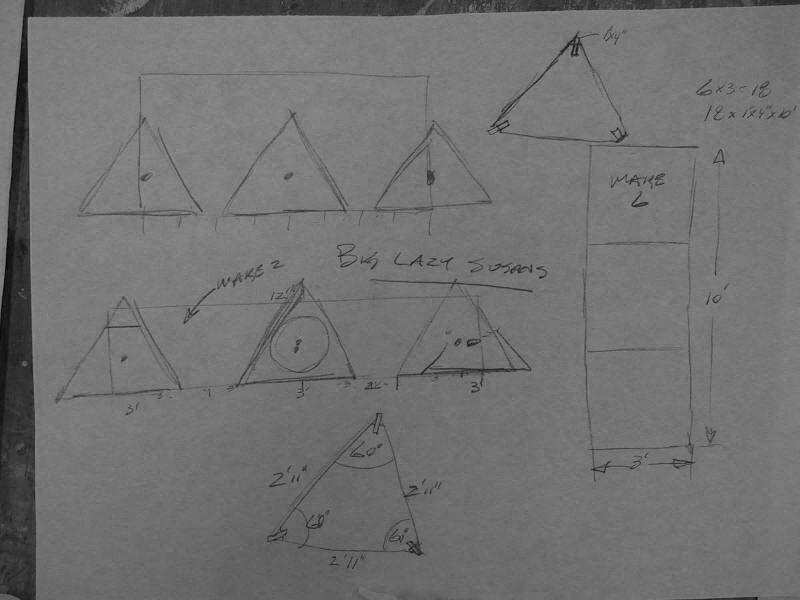
How do I build a Periaktoi?
Our Periaktoi frames are built using plywood tops and bottoms. The middle triangles are custom built from scrap plywood and 1×3 furring strips. The notch is for the 1×4 pine boards that will stand the unit up. We’ve ordered the lumber at 10 feet.

The verticals are placed in the notch and then a couple of brads are air nailed into the plywood, through the 1×4 and into the other side of the notch. This virtually locks the piece together.
Who Designed the Scenery and Lighting for “A Chorus Line”?
- The scenic design for “A Chorus Line” was created by Robin Wagner, and the lighting was designed by Tharon Musser. The scenic design for the show made extensive use of periaktoi, helping to create a dynamic and engaging performance.
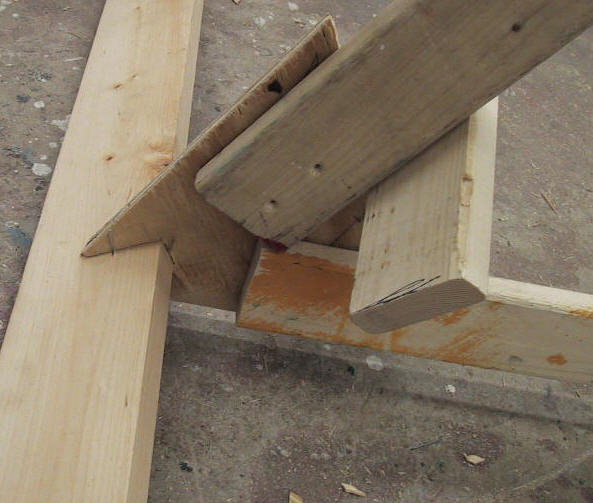
Since we had to build 12 triangles, we made a jig. I took one of the regular plywood triangles, attached a small piece of ply on each side of the point. Then, we placed the little triangles atop the 1×3 and pushed it into place. Then stapled. Doing it this way made sure that each was the same. I’m sure you’ve run into a situation where you’ve tried to nail something in place where the thing you were trying to line up is on the bottom.
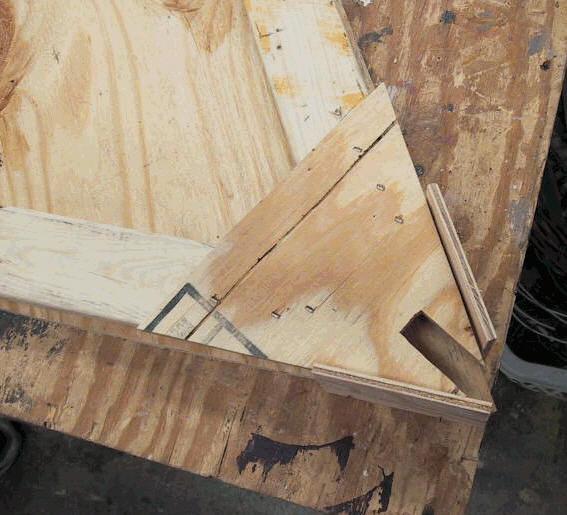
Remember to nail the thinner material into the thicker. In other words, we used 1/2″ ply for the little triangles and we’re nailing through the ply into the 1×3 stock. The staple gets more wood to bite into. Don’t forget the glue!!!

How to brace Periaktoi?
These hollow triangles serve more than just a money-saving purpose. If the middle triangles were solid, we wouldn’t be able to add the diagonal bracing. Since these units will be soft-covered, we need to add the bracing on the inside
How Were the Periaktoi Used in “A Chorus Line”?
- In “A Chorus Line,” the periaktoi were used to quickly change the backdrop of the stage and set different scenes. The rotating scenic device allowed the directors and designers to create multiple environments with minimal resources, adding to the overall flow and pacing of the performance.
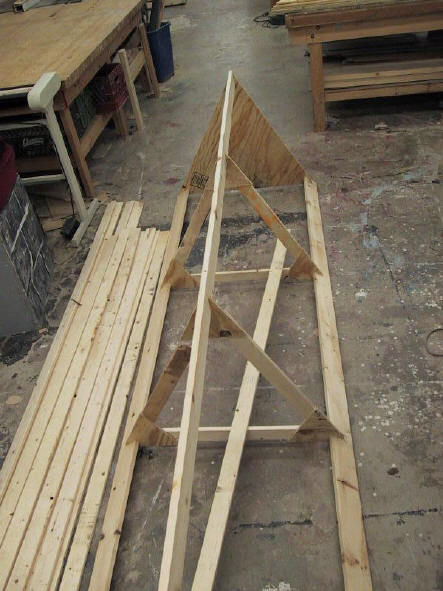
Setting the diagonal bracing properly is difficult. Getting the frame to be square, but in a triangle is tricky. I’ll post how we did this after we figure out how!
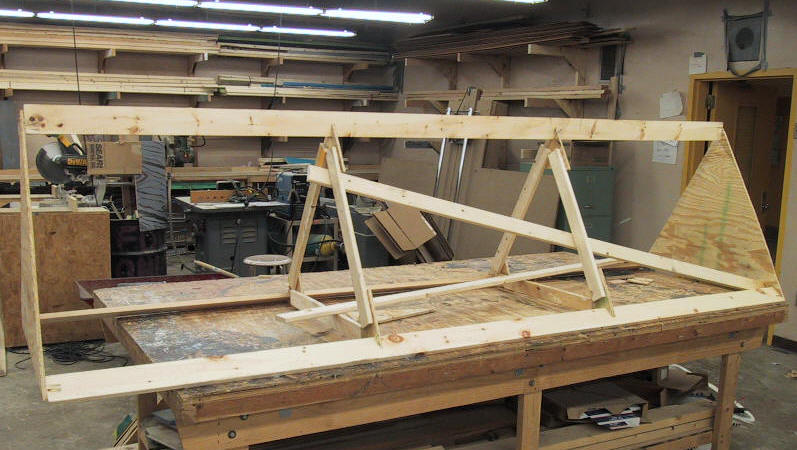
We figured it out. how to get these thing to be square before nailing in the diagonal bracing. Looking at the picture, you’ll see two red boxes. These are some of our practice cubes. They are already square. We placed one at each end. Clamped the ends to the boxes and screwed the boxes to the table. The side of the Periaktoi is butted up against some wood screwed into the side of the table.
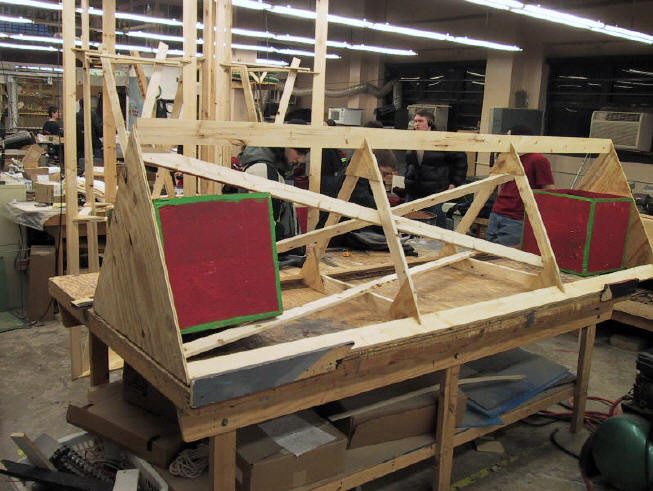
A forest of Periaktoi. Three units are done and they are taller then the shop lights.
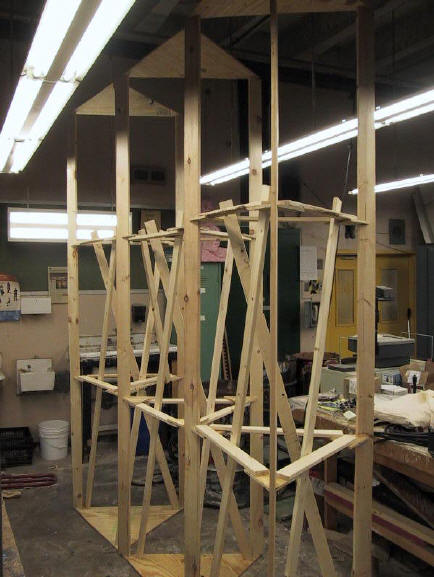
What do I cover my Periaktoi with?
I use traditional Muslin to cover my flats. Muslin works great for Periaktoi as well.
We are laying out the muslin for cutting. This bunch is 9 feet wide by several yards long. I tend to buy damaged muslin from RoseBrand in NYC. The damaged goods end up being half price from the new stuff. The damage? Just a few stains. Since we’re painting the muslin, we don’t care about a few stains…
How Long Did “A Chorus Line” Run on Broadway?
- “A Chorus Line” ran for over 6,000 performances on Broadway, making it one of the longest-running musicals in Broadway history. The show’s popularity was due in part to its innovative use of periaktoi and its overall scenic design, as well as its powerful exploration of the lives of dancers and the challenges they face.
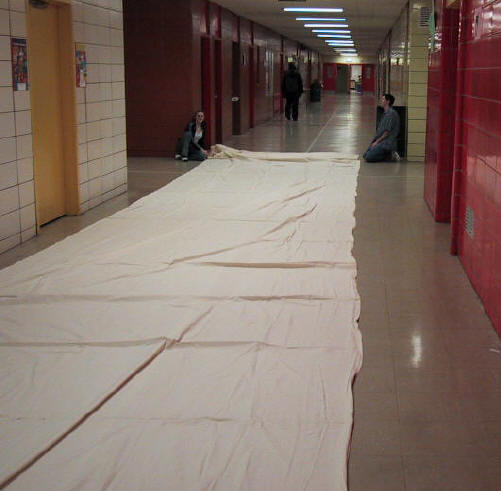
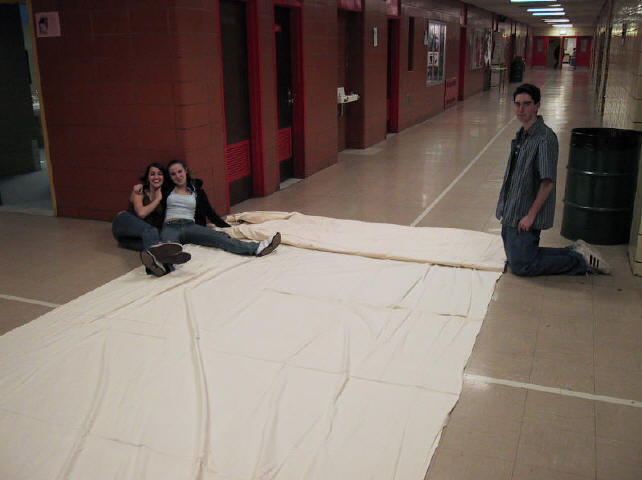
We laid the muslin out on our work table. Then we placed the frame on top, pulled the muslin up and stapled the edge to the wood.
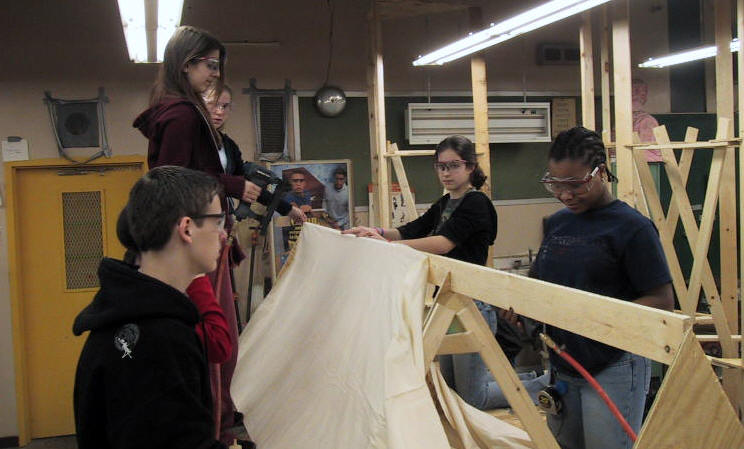
Before stapling, we ran a bead of glue along the wood edge. While stapling, we pushed the muslin down into the glue to be sure of a good bond.

Team work is very effective at this point. We don’t want the glue to dry before the muslin gets stapled.
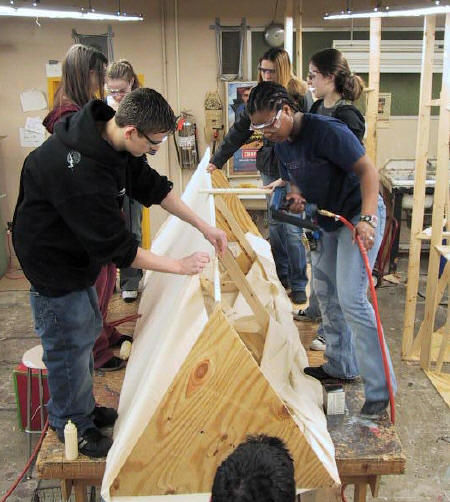
How do I Size Muslin?
These things ended up looking pretty good. Nice and tight muslin covering is very important to give the unit clean lines and a smooth surface. We used watered-down paint to size, or tighten the muslin around our periaktoi. Works just like sizing muslin for theatre flats.

Here we have three of the units standing side by side. Standing like this, they form a wall. Though our design doesn’t call for these to be up against each other, we could paint each side to match. This would give us three solid walls of our choosing.
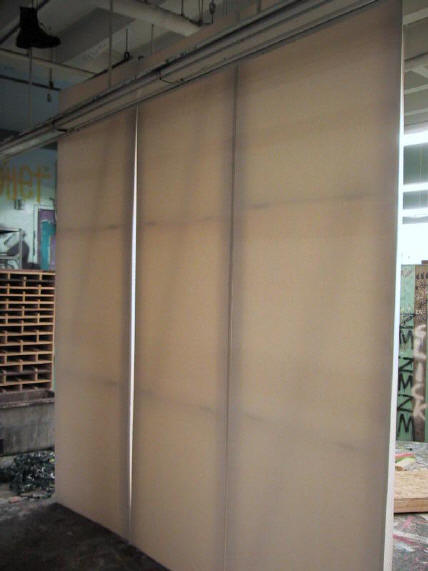
The rear view of our set of three Periaktoi. Our next steps include: sizing, mounting on turn tables and placing them all on platforms.

We’re sizing the muslin with watered down paint. I like using a 1 to 1 ratio. That’s half paint and half water. We use any color that we have too much of.
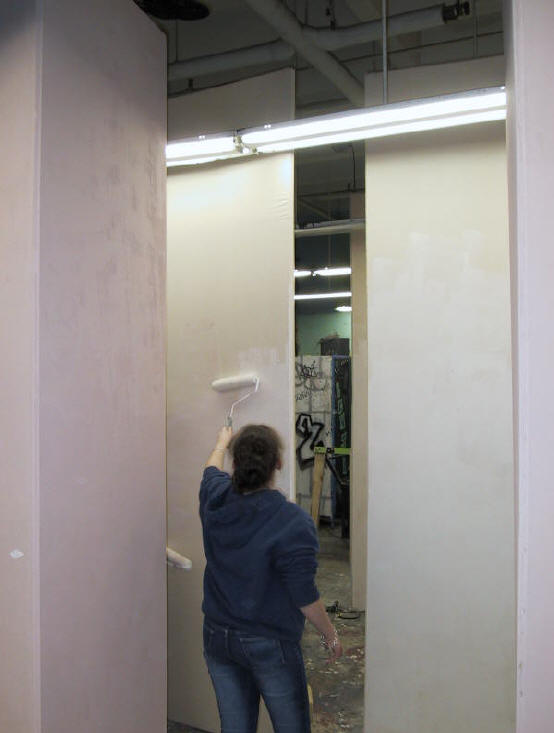
We’re working on placing rotating bases on the units.

The turntables need to be installed using a small access hole. This hole lines up with an access hole on the lazy Susan.
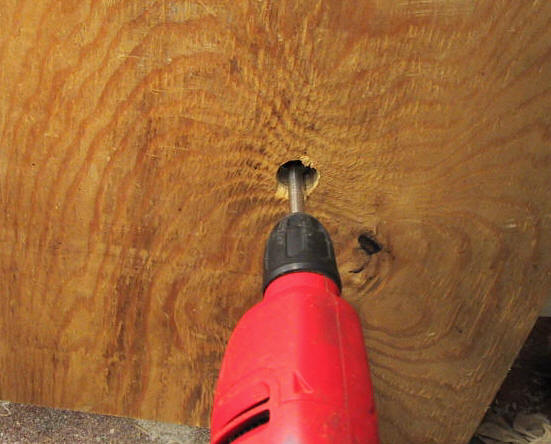
Safety glasses please!

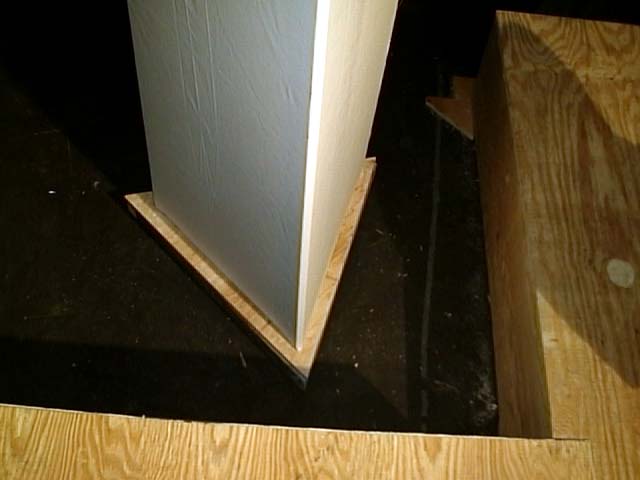
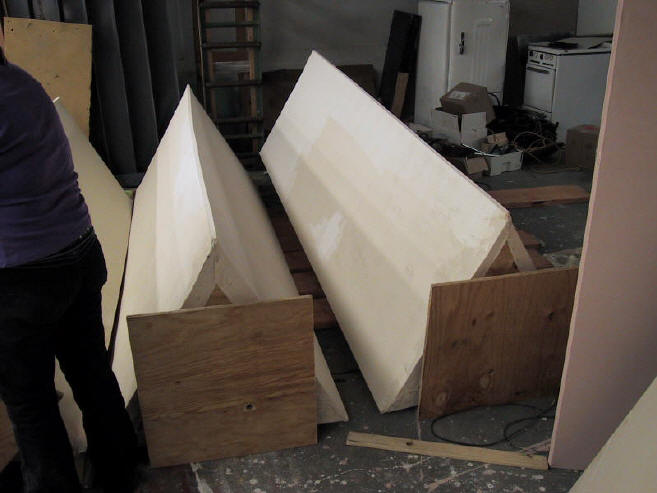
A Periaktoi is a triangular unit which is often made by one of two methods. The method you see here was via building a frame with three styles held together by three triangular pieces of 1/2″ ply. One at the top and bottom with the third at the center.
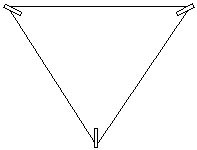
This is simply a side view of the assembled Periaktoi. Depending on the height of the unit, you can insert as many 1/4″ ply frames as you need. Why Might you need more 1/4″ ply braces? Think about what happens when you size the muslin. As the sizing dries, it shrinks. You don’t want the open sections of 1″x3″ to bow in. You’d end up with a big hour glass.


